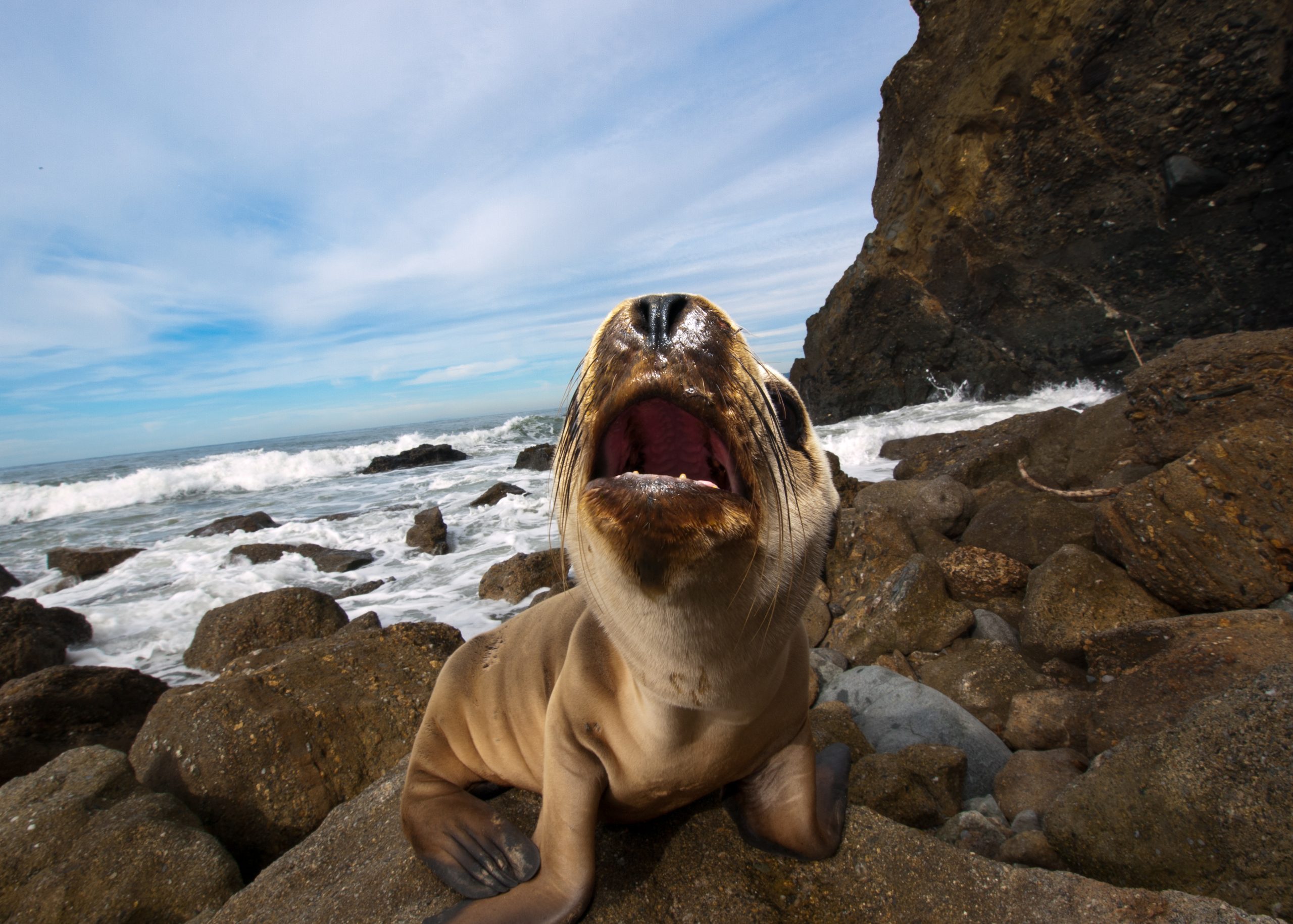Attack of “The Blob:” Climatic Anomaly Hits Sea Lion Pups Hard

The climatic anomaly referred to as “The Blob” – a sudden increase in sea surface temperature – was first detected in the winter of 2013 in the Gulf of Alaska. It gradually extended southwards and was further impacted by an El Niño event in June 2015. By that summer, The Blob encompassed the entire northeastern Pacific, down to the southernmost tip of the Baja California Peninsula in Mexico. This area of the ocean experienced an unprecedented 2-5°C increase above the historical average in sea surface temperature.
Around the same time, animal rescuers along the west coast struggled to deal with an increase in mass strandings of young California sea lions.
High sea surface temperatures have the potential to alter all levels of the ocean ecosystem, with disastrous effects for top predators like marine mammals. Diminished prey availability means female sea lions must expend more energy to find food or consume food items with lower nutritional values. These behavioral changes likely have dire consequences for pregnant or nursing females, who are already undergoing an energetically demanding process, and their pups.
A group of researchers led by Karina Acevedo-Whitehouse of the Autonomous University of Queretaro, Mexico and The Marine Mammal Center, Sausalito, CA, investigated how The Blob affected the fitness of sea lion pups.

They examined pups born during the sea surface temperature anomaly and compared their body condition, nutritional status, and immune function to pups born during a normal year.
“The most important thing we observed was that body condition and blood glucose levels of the pups were lower during high sea surface temperature events,” says Acevedo-Whitehouse. “As all the other biomarkers of malnutrition remain unchanged, the results are indicative of the early stages of starvation.”
Glucose-dependent immune responses were impaired in pups born during The Blob. This means that not only were these pups less able to create protective antibodies, they also had insufficient energy reserves to respond rapidly to immune challenges.
Acevedo-Whitehouse says that having suboptimal immune responses could be devastating to the entire sea lion population, particularly if they are exposed to a highly virulent pathogen. Even if this doesn’t happen, without proper nutrition, pups are unlikely to be able to respond to common or opportunistic pathogens and mortality is expected to be high – a scenario supported by the unusually high numbers of stranded, starving pups recorded along the California coast.

“Under the current climatic scenario of our planet, and despite wishful thinking from those who deny the current rate of change to our climate, related climatic anomalies are becoming more frequent,” says Acevedo-Whitehouse. “If we do not continue to implement measures to avoid or slow down the rate of climate change, problems such as these are going to get more severe.”
This study shows that atypical climatic conditions can limit energy reserves and compromise physiological responses that are essential for the survival of a top marine predator. However, Acevedo-Whitehouse and her colleagues warn that the effects of high sea surface temperatures are unlikely to be limited to sea lions; the entire northeastern Pacific ecosystem could potentially be vulnerable, and the consequences might only be observable several years from now, when the affected individuals reach reproductive age.
“I hope that our study contributes to scientific knowledge that helps us understand complex processes,” says Acevedo-Whitehouse.
“More importantly, I sincerely hope that our study adds to the growing body of evidence that proves that climatic anomalies can have striking negative effects of living organisms, and that it helps persuade those that are in a position to discuss and negotiate key agreements that can help our planet’s climate crisis.”
Reference:
Banuet-Martínez M, Espinosa-de Aquino W, Elorriaga-Verplancken FR, Flores-Morán A, García OP, Camacho M, et al. (2017) Climatic anomaly affects the immune competence of California sea lions. PLoS ONE 12(6): e0179359. https://doi.org/10.1371/journal.pone.0179359.
